Slow and docile, basking sharks are notable filter feeders and the second largest fish on earth.
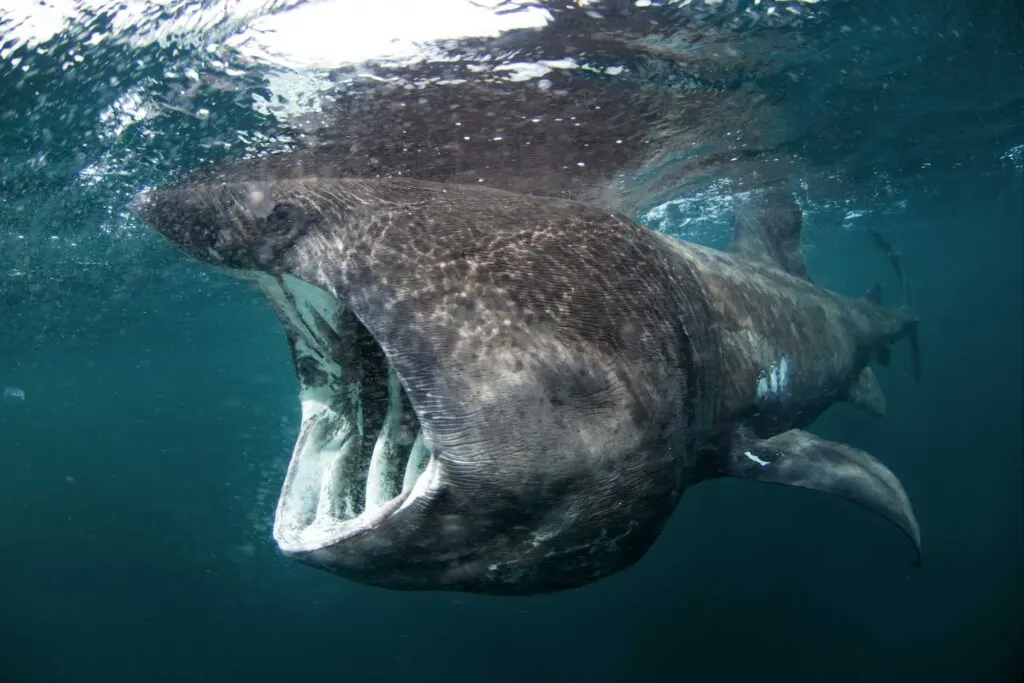
Basking Shark
Cetorhinus maximus
Basking Shark Scientific Classification
- Kingdom: Animalia
- Phylum: Chordata
- Class: Chondrichthyes
- Order: Lamniformes
- Family: Cetorhinidae
- Genus: Cetorhinus
- Species: Cetorhinus maximus
Basking Shark Appearance
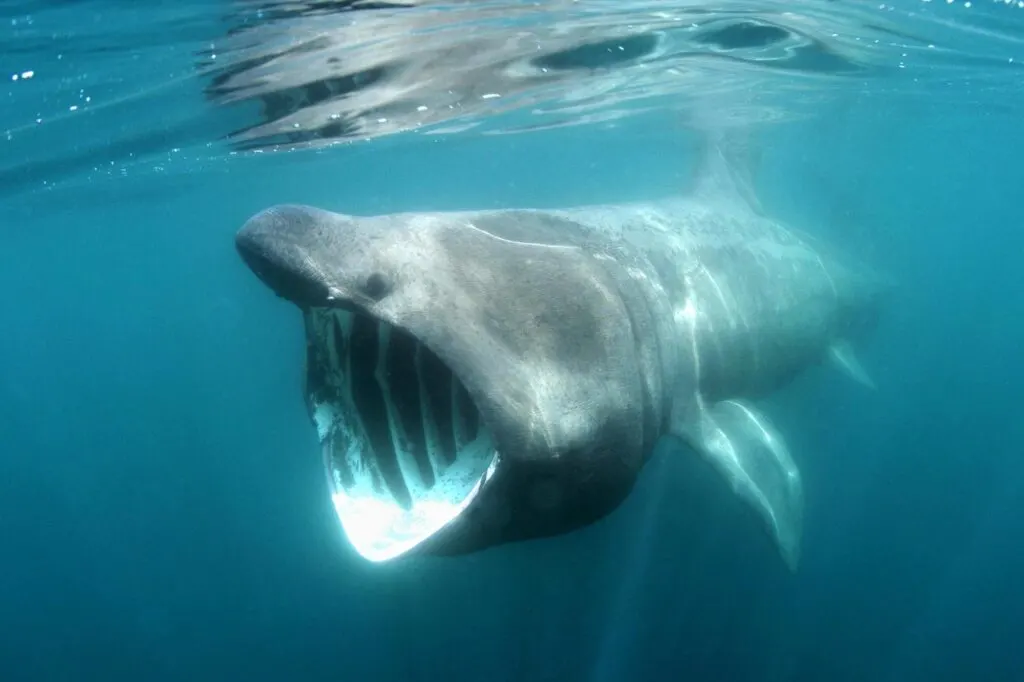
- Lifespan: 50 years
- Length: 26-40 feet
- Weight: 10,000-13,000 pounds
- Top speed: 4 mph
Also known as elephant shark or bone shark, the basking shark is a unique fish. It is ranked as the second largest shark species in the sea, with the largest one registered weighing around 42,000 pounds and measuring 40.3 feet long.
The average length is 26 feet and about 10,000 pounds. This fish doesn’t have a flashy color spectrum. A light grayish color is darker on the topside, and paler underneath is the primary color.
There is a large black triangular dorsal fin at the back of the shark, and the inside of the shark’s mouth is white. The skin is tough. The shark receives its name due to the appearance that it’s basking during feeding.
The mouth is extremely wide (up to 3 feet), making the head appear disproportionate to the body.
It has extended gill slits that surround almost the entire head, and there are many large gill rakers designed for filter feeding. These rakers prevent food from escaping through the gills.
Did you know? Despite their massive size and intimidating appearance, basking sharks are not aggressive and are harmless to humans.
Basking Shark Range & Habitat
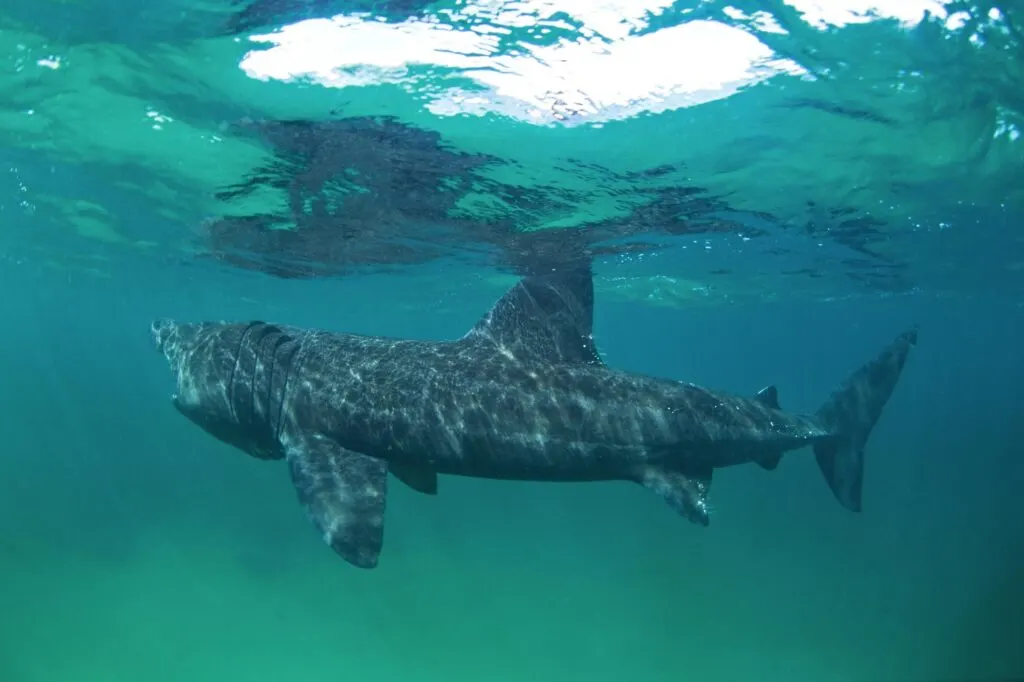
The basking shark is found in many locations throughout the world’s arctic and temperate water oceans, preferring temperatures around 50°F.
The shark lives in the coastal pelagic zone of the sea. This means that it’s found primarily near the coasts and doesn’t go down to the deeper water of the seafloor.
Coastlines all along the Atlantic Ocean and the Pacific Ocean have brought basking shark sightings.
Distribution
- Oceans: Atlantic and Pacific
Habitat
Marine Neritic | Marine Oceanic
Basking Shark Behavior and Lifestyle
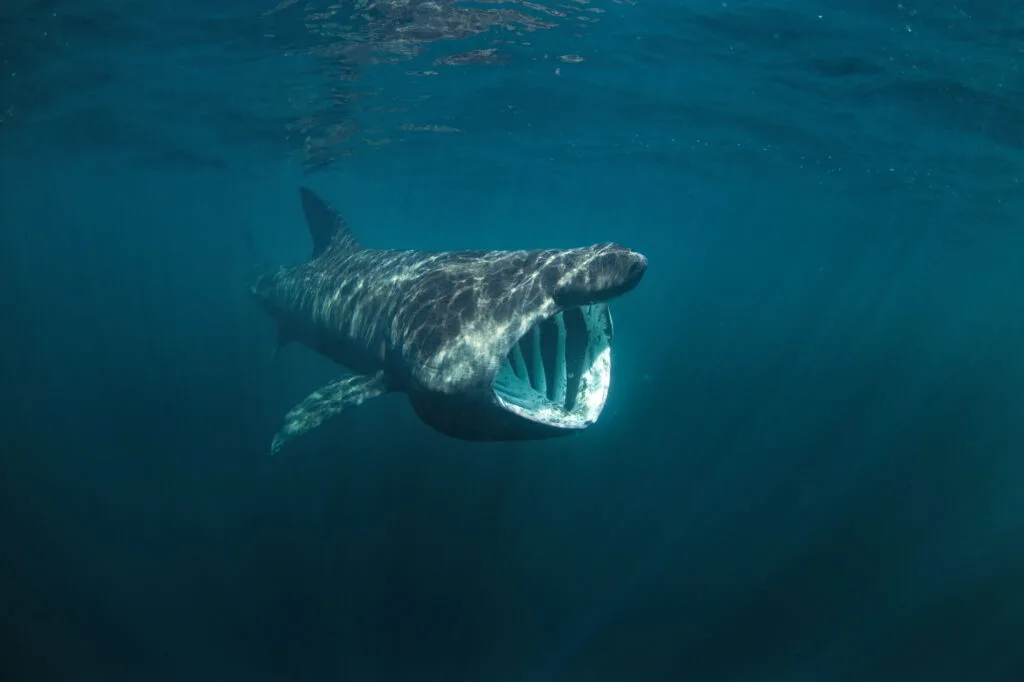
The basking shark is usually a solitary creature, although small shoals (groups) have been observed. Unlike the great white sharks, basking sharks are slow-moving and very docile fish, posing no real threat to humans.
They do not hibernate and are active year-round. They are known to migrate thousands of miles throughout the year following their food source.
Basking sharks also dive to deeper depths during the winter. They’ve been tracked as far down as 3,000 feet.
Basking Shark Diet
The primary food source for basking sharks is microscopic animals called zooplankton, as well as tiny plants that are known as phytoplankton.
The shark’s diet of zooplankton is a diverse mixture including various shrimps, fish eggs, larvae, and little fish. The sharks don’t go after larger fish or other sea life. Millions of plankton are consumed a day which can weigh a few hundred pounds.
The hunting practices are why the shark is designed with such a distinct look. Despite having hundreds of tiny teeth, passive feeding is how it hunts.
The shark opens its wide mouth while swimming and allows water to flow over the enlarged gill slits instead of actively sucking water in as the other filter-feeding shark species do.
The gill rakers, which are covered in mucus, then filter out the plankton. The water then exits through the gill slits. The gill rakers can strain over 53,000 gallons (more than two million liters) of water per hour!
Most hunting is done near the surface, although basking sharks sometimes do make deeper feeding dives. Basking sharks follow their food source of plankton thousands of miles and up to around 3,000 feet deep.
This is one of the reasons that they reside in so many different locations worldwide. Quite the experienced travelers!
Basking Shark Reproduction and Mating
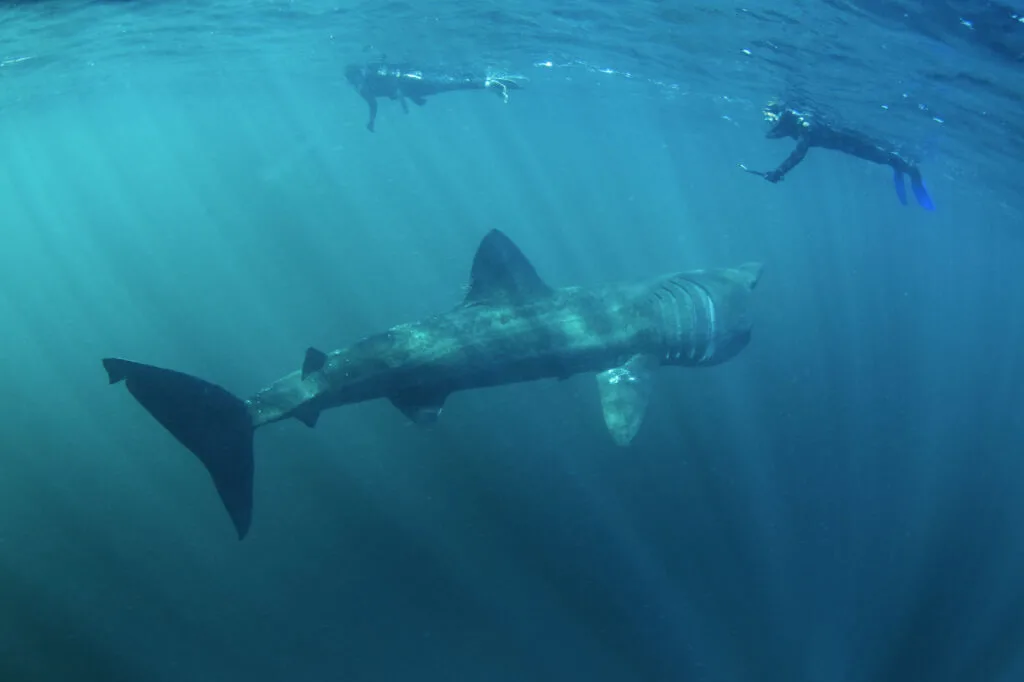
Not a lot is known about the birthing process of the basking shark, as only one live birth of six pups has been observed. These pups were 5-6.5 feet long. More studies will soon hopefully reveal if this is the average amount of pups per birth.
Mating is thought to occur in early summer months and birthing in late summer, following the female’s movement into shallow waters.
The gestation period of the female basking shark is at least two-three years. The basking shark is viviparous, as evidenced by the live pup’s birth as the young hatch from eggs that are in the uterus (known as being oviparous) and nourish themselves by eating other eggs that are inside the uterus.
A group of two to twelve basking sharks often will congregate off the West coast of the Isle of Man. The isle is located between Great Britain and Northern Ireland. Paired swimming, following nose to tail, close following, or leaping out of the water are courting behaviors.
Basking Shark Conservation Status
Endangered[1]
Basking Shark Predators and Threats
Due to their massive size, basking sharks do not face many natural predators. Great white sharks have been observed feasting on the remains of the whales. Killer whales and Cookiecutter sharks have also been spotted hunting basking sharks.
Humans are one of the biggest problems as far as predators go. Despite basking sharks being protected in waters of North America, the European Union, and a number of other places, illegal fishermen still target them on the high seas.
Boats and jet skis often strike the sharks as people excitedly try to get a view of them. The activity can also affect the sharks feeding, courting, and mating.
Commercial fishing has caused a population decline, and the basking shark is considered a Species of Concern by the United States Federal government within the eastern north Pacific Ocean.
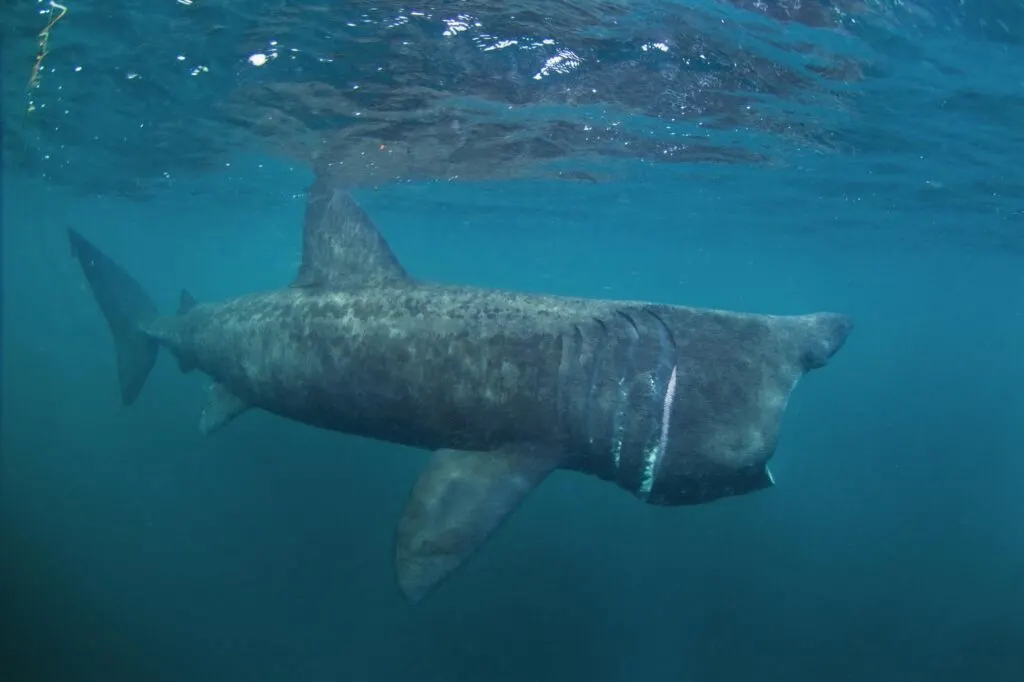
Basking Shark Facts
Here are some incredible facts about basking sharks:
- Out of more than 500 species worldwide, this giant fish is one of only three species of plankton-eating sharks. The megamouth and whale shark are the other two species.
- Among sharks, exclusively eating zooplankton is rare only two other sharks share this trait, the whale shark and the megamouth shark.
- Their mouths aren’t the only overly large body parts. The basking shark has the most extensive liver of all sharks, percentage-wise, making up to 25% of the shark’s body weight. The liver is also high in the low-density hydrocarbon squalene. These hydrocarbons help the shark maintain near-neutral buoyancy.
- Basking sharks have the smallest weight-to-weight brain size of any shark. However, their brain’s cerebellum consists of 30% of the brain, which is significantly larger than any other shark that has been investigated.
- Stories of basking sharks are the stuff of myths and legends. Fisherman and locals had reported “sea serpent monster sightings” or an unidentified organic mass known as a globster. The most famous of these is the Stronsay Beast which washed ashore on the island of Stronsay, Scotland, on September 25th, 1808. Initially heralded as a new sea serpent species by the Natural History Society of Edinburgh, it was later deemed to most likely be a basking shark.
- Basking sharks have been seen leaping out of the water outside of the courtship process. This may be a way of getting rid of parasites.
